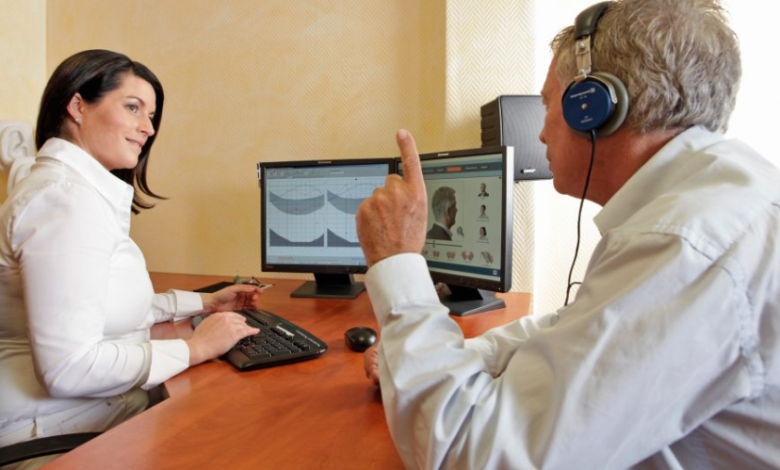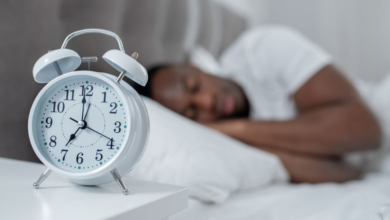Noise Monitoring Is Not Enough — Why Australian Workplaces Must Pair It with Audiometric Testing for True Hearing Safety

Across many Australian industries—manufacturing, construction, logistics, mining, and even farming—workplace noise is one of the biggest health dangers we face. Safety plans nearly always include noise checks, yet the core concern is not simply gathering the numbers. The real focus must be on follow-through.
The typical cycle starts with a hygienist placing a few dosimeters on workers, the numbers are filed, staff are told to wear hearing protection, and that’s where most people stop. The job isn’t done unless the findings are paired with routine hearing tests to confirm that the protection is actually effective.
Monitoring decibel levels and running hearing tests are frequently seen as two unrelated jobs—one degree-based, the other compliance-based. The truth is they are interconnected. Using only one of them invites overconfidence, poor long-term health, and the risk of fines.
We need a new standard across Australian industries: first take risk readings, next check health, and finally adapt measures accordingly.
Noise Maps the Environment—Hearing Tests Map the Worker
A noise check alone reveals the level of risk—where the noise peaks, on which shift, and its loudness. This data is crucial for pinpointing trouble spots and judging if the upgraded equipment or new shift pattern is helping the people on the floor.
But a noise dosimeter alone can’t tell you if a worker’s eardrum is really being put at risk. That’s where audiometric testing fills the gap.
An employee may sit on a shift with average noise levels that barely creeps under the 85 dB(A) threshold, yet a series of short, high-level noise ‘peaks’ — like a pneumatic drill fired next to the ear — can still cause lasting damage. Equipment that suddenly vibrates more loudly, or poorly fitted ear muffs that slip off mid-saw, can trick a typical dose badge. And on the management front, a report that shows a maintenance checklist on the right dates can still present a blind spot if new starters show early hearing loss, invisible in bulk averages. Early shifts at lower frequencies, like 2,000 Hz, light the signal years before the average TWA shifts on paper.
So noise monitoring provide a site noise map, and audiometric tests provide the heartbeat of the workforce.
Here’s the disconnect. In a lot of Australian workplaces, hearing conservation still operates on a calendar. Monitoring is farmed out to consultants on a “maybe-when-we-get-a-complaint” cycle at best, or every three years at worst. Audiometric tests happen, if at all, solely to tick the box under WHS Regulation 58 — a baseline in three months and the next sitting every two years.
That rigid schedule can’t keep pace with the day to day noise mix. We see the answer in a simple loop: opening, feed, act, close. “Injury: perform your noise survey, spot a new drilling target, and pull in the team for targeted testing, not price for three years.” “Trouble: Earring shifts? Backtrack your high-frequency gritting phase and drill down on controls now, before settlements, before the replay to early rugby right.” By breaking down silos between the hearing and the setting noise evaluations, companies can reduce injuries before they happen.
Create Feedback Loops Between Monitoring Results and Medical Data
By seamlessly linking monitoring data and employee health records, we can transform routine regulatory checklists into a dynamic system that proactively manages risk.
Data Without Integration = Lost Opportunities
Countless Australian employers gather the “right” data but never join the pieces. Noise monitoring slips into a hygiene report, audiometric scores are parked with HR or an outsourced vendor, and exposure logs stay in the lab. Without a shared system that matches exposure levels to individual health outcomes, job functions, and recent task changes, the information fails to trigger action.
Organisations now must adopt joined-up exposure-tracking solutions that let a workplace safety officer see exposure logs, audiometric results, and training records for a specific group in a single view.
This collective vision will:
– Surface breaches in hearing protection that were once unseen.
– Direct precise, timely refresher training to roles with rising risk levels.
– Shape the procurement of hearing protectors that fit the workflow rather than the vendor’s checklist.
– Provide a stronger hand when responding to future compensation claims.
The Business Case: Beyond Compliance to Credibility
Wearing hearing loss doesn’t change its cost: it side-lines productivity, drives up premiums, erodes employer brand, and bumps up the compensation curve. Noise-Induced Hearing Loss has kept its title as one of Australia’s most frequent, chronic, and expensive workplace illnesses. By shifting the noise data from the silo to the dashboard, the cost of action drops and the cost of inaction stays high.
Companies that ignore noise tracking combined with regular audiometric testing risk:
– Steeper workers’ compensation premiums and more claims being lodged
– Bad press for injuries that could have been prevented
– Increased chance of labour disputes, or worse, headlines
– Closer inspections by regulators, especially with the new WHS enforcement strategies
On the other hand, firms that connect real-time noise data with individual worker results show regulators, board members, and investors the proof: our goal is worker safety, not just meeting the minimum.
See also: Discover Miami’s Premier Approach to Healthy Skin & Rejuvenation
What’s Next
To build a hearing safety programme that’s fit for modern Australia, firms should:
– Set automatic alerts for hearing tests driven by an employee’s specific noise exposure, not a one-size-fits-all calendar
– Display department-by-department trends using combined digital maps of noise levels and hearing health shifts
– Make accountability real by including testing deadlines and review schedules in risk assessment docs and safety performance indicators
– Leverage badges that measure noise dose and apps that review audiometric results in the moment, so trends are never miles behind
Conclusion: A Fully Integrated Approach Is the Only Path Forward
In Australia’s tightening health environment, being compliant is no longer the goal; the goal is protecting every worker’s hearing before the first exposure event occurs.
Tracking noise levels looks great, but it only protects with real-time response. Testing hearing in oh-so-good workers is useless unless the exposure that caused the loss is halting in real time. Take the steps today, lock in the data, and show that blind compliance is extinct.
When you combine hearing testing with sound monitoring, you get a smarter system that reacts in real time. The data tells you when something dangerous is happening, and the system responds to keep workers safe.
The real question isn’t if you should monitor sound or test hearing; the question is whether you’re doing both, integrated, in a way that makes safety measurable and workers protected.




